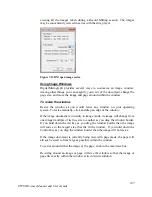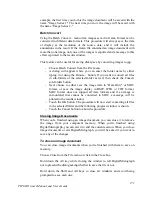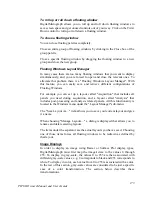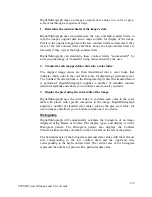
181
PIPS II Owners Manual and Users Guide
The frequency at which you want these images to be saved can be set using
the toolbox menu. Clicking the toolbox brings up the PIPS Record Options
window:
Figure 7-23 DM PIPS II record options window.
History buffer size:
Defines the size of the stack that is displayed. This is limited
by the amount of available memory on the computer. It is recommended that
this be set to 19 or less images. Note that if the memory used by images is
larger than the available memory, DM will stop acquiring images.
Auto save:
Is used for saving the images that are acquired by the camera on the
disk. The user has the option to i. turn the auto save
Off
, ii. to save
All
images
, iii. to save the
Last X-images
, or iv. to save the images
Every X-
minutes
.
Save location:
Use this option to define where the images are saved. Files will
automatically be named with a sample number and an image number
embedded in the file name. If the stage is raised into the airlock, then a new
sample number will be used the next time that the Record Milling mode is
used. If milling is interrupted by using the Pause or Stop selection on the
Milling page of the PIPS II, then the sample number remains the same when
milling is restarted.
NOTE:
The exposure time can be adjusted before the milling process is
started and/or anytime during the process. In record milling mode it can take
up to a full stage rotation before a change is observed, therefore, it may be
preferable to switch to Live View, change the exposure time, then switch back
to Record Milling mode.

































